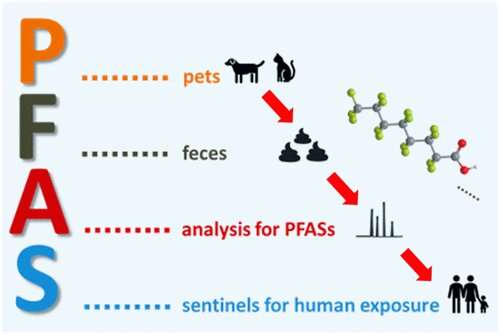Credit: American Chemical Society
Per- and polyfluoroalkyl substances (PFAS) are used in a wide range of consumer products, from pizza boxes to carpets to non-stick cookware. Therefore, it's not surprising that these water- and stain-repelling substances are ubiquitous in the environment. Now, researchers report in Environmental Science & Technology Letters that cats and dogs excrete some PFAS in their feces at levels that suggest exposures above the minimum risk level, which could also have implications for the pets' owners.
Kurunthachalam Kannan and colleagues measured 15 different PFAS in 78 samples of cat and dog feces. Using high-performance liquid chromatography and tandem mass spectrometry, the researchers detected 13 different PFAS in the samples.
The most abundant compounds in both cats and dogs were longer-chain perfluorocarboxylic acids. Based on these data, the researchers estimated PFAS exposure levels for the pets.
They found that for three compounds (perfluorooctanoic acid, PFOA; perfluorononanoic acid, PFNA; and perfluorooctanesulfonic acid, PFOS) and for total PFAS, estimated exposure levels were above the minimal risk levels set by the U.S. Agency for Toxic Substances and Disease Registry.
Because pets share homes with people, they could be used to monitor human exposure to PFAS, the researchers say.
More information: Jing Ma et al. Fecal Excretion of Perfluoroalkyl and Polyfluoroalkyl Substances in Pets from New York State, United States, Environmental Science & Technology Letters (2020). DOI: 10.1021/acs.estlett.9b00786
Journal information: Environmental Science & Technology Letters
Provided by American Chemical Society
























